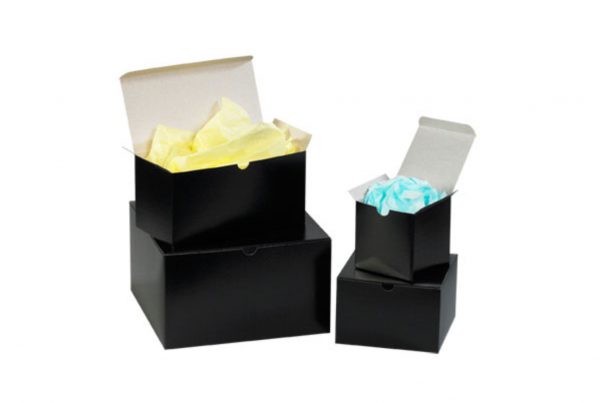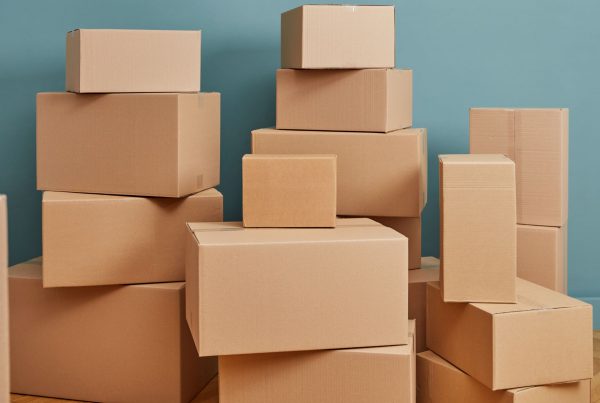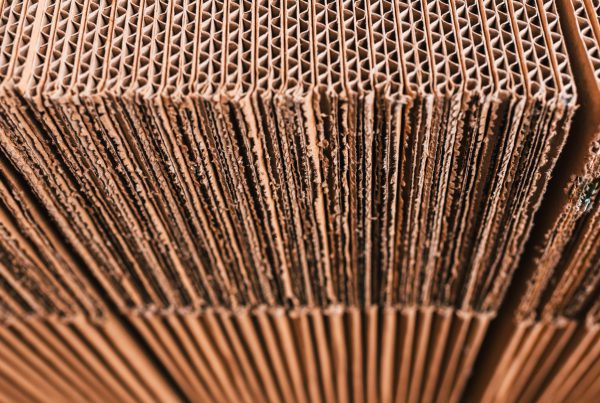Did you know more than 30% of returned eCommerce items suffer damage tied to wrong packaging choices? That number shows how much a simple box can change your costs and customer trust.
At The Boxery, we help you decide when to pick a lighter board for savings and when to go heavier for safety. You’ll learn how flute profiles—B, C, and E—affect rigidity and how 32 ECT in B, C, or E flute compares to a 44 ECT C flute for higher loads. If you’re hunting for dependable Packaging boxes, this is the kind of practical context that actually makes decisions easier.
Quick trade-offs: thicker board and higher ECT give extra protection but add material and shipping cost. Thinner options save money, improve print quality, and reduce storage needs.
We’ll show how to read a Box Manufacturer’s Certificate so the information you get actually helps you choose the right packaging. By the end, you’ll match the right box to your product and avoid over-packaging or under-protecting.
Key Takeaways
- Pick a lighter board for everyday products to cut costs and waste without losing protection.
- Choose heavier boards (44 ECT C flute) for heavier loads, tall stacks, or rough routes.
- Flute type and ECT directly affect rigidity and shipping performance.
- Read the Box Manufacturer’s Certificate to make smarter purchasing decisions.
- The Boxery offers practical, implementable guidance so you can act with confidence.
Buyer’s guide overview: choosing the right corrugated box strength for safe, cost‑effective shipping
Good packaging begins by matching your product’s needs to the actual stresses of shipping. Start with clear goals: protect the product, control cost, and deliver a great unboxing. We guide you to trade off protection, presentation, and price so you get fit-for-purpose results.
More fiber buys protection — but it also raises unit cost and outbound weight. Thinner flutes like E give sharper print and save storage space. For many eCommerce parcels, 32 ECT in B or C flute is a practical baseline.
When weight or risk climbs, move up. A 44 ECT C flute handles roughly 40 lb and adds crush resistance for palletized or long‑haul transit.
Estimate packed weight and dimensions first. Map carriers and routes — local vs national matter. Balance material thickness with shipping cost. Validate choices with sample boxes and BMC information. Let The Boxery recommend a short SKU list so your team orders confidently.
Quick aside from the floor: once, I spec’d a light single‑wall for ceramic jars because it “looked fine.” Stack leaned by lunchtime, one corner crushed, and I spent the afternoon rebuilding with the right flute. Lesson learned — better to test than guess.
As you assess options, keep overall presentation in mind too — especially for Cardboard packaging where print quality and surface smoothness matter for brand perception.
How box strength is measured: ECT, Mullen burst, and what the BMC stamp tells you
Clear labels and tests remove guesswork when you choose packaging. The results tell you how a board will behave under stacking, impact, or pressure. Read them so your shipment matches the real-world risks.
Edge Crush Test: stacking performance and common ranges
The edge crush test (ECT) measures the force needed to crush a board on its edge. ECT correlates to stacking strength—useful when boxes are palletized or stored. Typical single-wall choices include 32 ECT in B, C, or E flute and a heavier 44 ECT C for larger loads. The flute letter signals thickness and cushioning: C gives more padding than E; B folds more easily.
Mullen burst test: sidewall pressure and rough handling
Mullen burst measures burst in psi and predicts sidewall rupture under impact or conveyor abuse. Legacy ratings like 200‑lb burst remain a quick indicator of how the cardboard will resist puncture. Recycled content can lower burst numbers while ECT keeps vertical performance—so choose the test that matches your route and handling risks.
Reading the Box Manufacturer’s Certificate (BMC)
Your BMC stamp is a compact roadmap. It lists manufacturer, construction (single-, double-, or triple-wall), ECT or burst rating, and often size and weight limits. Use ECT for stacking and palletized shipments. Pick a higher burst when side impacts are likely. Check size and weight limits on the stamp before packing contents.
Understanding corrugated materials: flutes, walls, and board construction
Knowing how flutes and layers work together makes choosing the right material straightforward. We break down the common flute types and wall options so you can match board and fluting to protection, print, and cost goals.
Flute types (A, B, C, E, F): thickness, crush resistance, and best‑fit uses
Flutes are the wavy medium between liner sheets; their height and spacing set board thickness, cushioning, and crush behavior. A flute (~1/4″) cushions best for fragile items, while B (~1/8″) resists crushing and folds neatly for mailers and RSCs. C flute (~11/64″) is the common go‑to—extra thickness for larger cartons without jumping to heavy options. E flute (~1/16″) gives a thin sheet and an excellent print surface, ideal when presentation and storage efficiency matter. F and micro‑flutes suit retail packs and inserts rather than high‑stress shipping.
Single-, double-, and triple-wall boards: when added layers boost protection
Single‑wall board covers most eCommerce needs—lightweight, printable, and cost‑effective. Double‑ and triple‑wall add layers of liner and fluting to raise stacking strength, puncture resistance, and overall durability for heavier or industrial loads. More layers mean more protection, but also more material and thickness. Balance performance with sustainability and freight cost, and let The Boxery help you pick the minimal board that meets your shipping profile.
Standard Strength Corrugated Boxes vs Heavy Duty: What’s the real‑world difference?
You don’t need the heaviest board to protect every product—matching materials to risk saves money and headaches. For many shipments, a single‑wall 32 ECT in B, C, or E flute covers typical 15–25 lb loads with good print and storage efficiency. The heavier single‑wall 44 ECT C flute is built for about 40 lb and tougher handling. It increases crush resistance and resists panel bowing when cartons sit in tall stacks or face rough transit. Expect tradeoffs: more board and higher ECT improve protection but raise unit weight and freight cost. Size, walls, and flute type together determine how a box performs under stacking and compression.
If you’re sending compact cube loads, a practical pick like shipping boxes 8x8x8 can simplify packing density without overbuilding the spec.
Key decision factors: weight, size, stacking pressure, and transit risk
Begin by measuring packed weight and size — that tells you the minimum ECT or burst you need. Match your contents’ weight and outer dimensions to the rated specs before fine-tuning. For many parcels, 32 ECT single-wall supports typical 15–25 lb shipments. Move toward 44 ECT when products approach 40 lb or when stacking rises.
Weight and dimensions: align contents to ECT or burst
Start with packed weight and outer size; they dictate the minimum edge crush and burst ratings you need. Dense or large products often benefit from a B or C flute to reduce panel bow and improve edge support.
Stacking strength and warehouse realities
Palletized storage and tall stacks increase pressure on edges. Prioritize ECT for stacking strength; it predicts compression and helps avoid corner crush.
Fragility, puncture resistance, and cushioning needs
When routing includes conveyors or rough handling, higher burst ratings help prevent sidewall puncture. Hard-edged products need inserts or cushioning—don’t rely on the box alone for protection.
The Boxery rule of thumb
Match rated specs to packed weight and sizes first. Prioritize ECT for stacked pallets; use burst for rough handling. Upgrade to double-wall or change flute before oversizing the carton.
| Scenario | Typical Rating | When to upgrade | Practical tip |
| Light eCommerce parcels | 32 ECT | Heavy contents >25 lb | Use E or C flute for print and fit |
| Palletized goods | 44 ECT | Tall stacks or heavy loads | Prioritize the edge crush test rating |
| Rough transit/conveyors | Higher burst | Sharp corners or frequent handling | Add inserts and reinforce sidewalls |
| Dense or large items | Move to B/C flute or double-wall | Panel bulge or corner crush is visible | Sample-test before committing |
Design and cost tradeoffs: printing quality, storage efficiency, and sustainability
Choosing the right flute and board affects both on-shelf appeal and your warehouse footprint. Small changes in fluting, thickness, or coatings can shift costs and look overnight.
Printing surfaces and presentation: how choices affect branding
The flute gives a smoother print surface and tighter panels, so ink reads sharper and colors pop. That makes it ideal when presentation matters most. Thicker flutes add texture and cushion but can introduce visible ridges that slightly affect print uniformity. If scuffs or transit wear threaten your look, consider coatings or liners to preserve the finish.
Material usage, freight cost, and environmental impact
More board means more fiber, higher inbound cost, and heavier outbound shipping. Slimmer profiles pack more boxes per shelf, cut storage needs, and speed picking. Balance matters: right‑sizing the sheet and choosing the right flute type reduces waste without risking damage. We can pre‑flight your artwork against target materials so your packaging looks sharp and ships smart.
When to choose The Boxery’s standard strength vs heavy‑duty options
Use cases for lighter specs
For many eCommerce RSCs carrying 15–25 lb of products, 32 ECT in B, C, or E flute gives the right balance of performance and cost. The E flute boosts print quality and saves storage space. B and C flutes add foldability or cushion without jumping to a heavier board.
When heavy‑duty makes sense
Move to 44 ECT C when packed weight nears 40 lb, pallets stack high, or routes include rough transit. Higher ECT raises edge crush resistance and reduces corner failures.
If you’re comparing options side‑by‑side, it’s worth browsing Standard strength corrugated boxes to benchmark common sizes and specs before you upshift materials.
Conclusion
A smart box plan saves money, prevents damage, and improves the unboxing moment. Use ECT as your go‑to test for stacking strength and choose burst when side impacts threaten shipments. Common eCommerce choices like 32 ECT in B, C, or E flute work well for many items. Move to 44 ECT C when weight or tall stacks add pressure. Match board, flute, and layers to the route, not habit. Tighter flutes favor print and storage; thicker sheets add cushion but raise material and shipping costs. The Boxery will help you confirm specs from the BMC, test samples, and pick the right packaging so your shipping works—and your customers smile.
FAQ
How do standard strength corrugated boxes compare to heavy-duty options?
Standard-strength corrugated boxes are ideal for moderate weights and everyday shipping. They use lighter boards and common flute types to balance protection with cost and storage efficiency. Heavy-duty boxes add thicker board, extra walls, or higher ECT/Mullen ratings to resist stacking pressure, rough handling, and puncture — making them better for high-value, heavy, or long-distance shipments.
What should I consider in a buyer’s guide when choosing box strength for shipping?
Start with the item’s weight, dimensions, and how fragile the contents are. Match those to the box’s ECT or burst rating, consider stacking loads in storage and on pallets, and evaluate transit risk (carrier handling and distance). Factor in cost, print quality needs, and sustainability — sometimes a slightly stronger box or more internal cushioning saves replacement and return costs.
How is box strength measured, and what does the BMC stamp tell me?
Two common tests are the Edge Crush Test (ECT) — which predicts stacking strength — and the Mullen burst test — which measures resistance to puncture and sidewall failure. The Box Manufacturer’s Certificate (BMC) stamp lists grade, ECT or burst value, maximum recommended weight, and construction details. Use those numbers to ensure safe stacking and transit limits.
What is the Edge Crush Test (ECT), and which ranges are typical for shipping?
ECT measures the force required to crush a board edge and correlates to stacking strength. Typical ECT values for e-commerce and general shipping are 32, 44, and 55 lb/in. Higher ECT means better compression resistance for pallet stacking and warehouse storage — choose the value based on expected stacking loads and package weight.
What does the Mullen burst test indicate?
The Mullen test measures the pressure needed to burst the corrugated board and reflects sidewall strength and puncture resistance. It’s useful when packages face rough handling or potential impacts. Higher burst values mean stronger resistance against punctures and rough transit conditions.
How do flute types and wall construction affect protection?
Flute profiles (A, B, C, E, F) vary in thickness and cushioning. A and C flutes offer more cushioning and stacking support, while B and E support better print surfaces and compact packaging. Single-, double-, and triple-wall boards stack layers to increase crush and puncture resistance. Choose flute and wall combinations that match fragility, print needs, and space constraints.
When is single-wall board sufficient versus double- or triple-wall?
Single-wall works for light to moderate items and many retail or e-commerce uses. Double-wall adds rigidity and better resistance to compression and puncture, suitable for heavier or bulkier goods. Triple-wall is for very heavy loads, industrial parts, or long storage where stacking pressure is high. Match board layers to weight, stacking, and transit risk.
What real-world differences will I notice between standard and heavy-duty boxes?
You’ll notice heavier boxes are stiffer, dent less, and hold up under higher stacked loads. Standard boxes are lighter, easier to store, and often cheaper. In transit, heavy-duty cartons reduce box failure, product damage, and returns — important for fragile or high-value shipments. For low-risk, lightweight items, standard-strength options usually suffice.
How should I align package weight and dimensions to an ECT or burst rating?
Start by calculating the total package weight and expected stacking height on pallets. Use ECT to choose a box that withstands the compression load — higher ECT for taller stacks or heavier packages. For items prone to puncture or rough handling, prioritize a higher Mullen burst rating. Suppliers or packaging engineers can help match ratings to your load profile.
What role does stacking strength play in warehouse and transit planning?
Stacking strength determines whether a box can support loads above it without crushing. In warehouses and during pallet transport, improper stacking leads to collapsed cartons and product damage. Consider palletizing patterns, maximum stack height, and forklift activity when selecting box strength to avoid costly failures.
How do fragility and puncture risk affect internal cushioning choices?
Fragile items need both adequate box strength and internal protection like foam, bubble, or molded pulp. If a box has lower puncture resistance, increase internal cushioning and choose corner protection to prevent concentrated impacts. For rough-handling routes, combine higher burst ratings with resilient cushioning for the best results.
How do printing needs and presentation influence pack selection?
Flute size and wall smoothness affect print quality. Finer flutes (E, F) produce a smoother surface for high-resolution graphics and branding, while coarser flutes (A, C) may show texture. Balance presentation needs against protection — sometimes a corrugated liner or laminated surface provides printability without sacrificing strength.
What are the cost and environmental tradeoffs when choosing materials?
Heavier or multiwall board increases material and freight costs but reduces damage-related losses. Lighter boxes cut shipping costs and storage footprint but may raise return rates if inadequate. Recycled content and recyclable designs reduce environmental impact. Evaluate total landed cost — packaging, freight, and damage — to make sustainable choices that also save money.
When should I choose The Boxery’s standard-strength option versus heavy-duty?
Choose The Boxery’s standard-strength cartons for moderate-weight e-commerce items, retail-ready RSCs, and situations where cost and storage efficiency matter. Opt for heavy-duty solutions when shipping high-value goods, heavy loads, or when transit involves high stacking or rough handling. If in doubt, test shipments or consult The Boxery’s packaging team for a tailored recommendation.
How can I test whether a selected box will protect my products in transit?
Perform a simple drop and compression test with representative packed samples. Simulate pallet stacking and handling by hand or with equipment to check for weak points. For higher assurance, use laboratory tests for ECT and burst values or partner with a packaging specialist to run ISTA-style procedures that mimic real-world shipping hazards.





Recent Comments